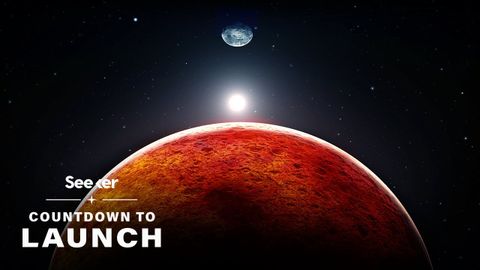這個新的火星月球任務可以解釋生命是如何開始的。 (This New Martian Moon Mission Could Explain How Life Began)
Summer 發佈於 2020 年 10 月 08 日  沒有此條件下的單字
沒有此條件下的單字US /əˈprəʊtʃ/
・
UK /ə'prəʊtʃ/
- v.t./i.逼近;找...商量
- n. (c./u.)通道;入口;接洽;處理方式;方法
US /səˈner.i.oʊ/
・
UK /sɪˈnɑː.ri.əʊ/
US /məˈtɪriəl/
・
UK /məˈtɪəriəl/
- n. (c./u.)布料;素材;資料;材料;物質
- adj.重要的;物質的
